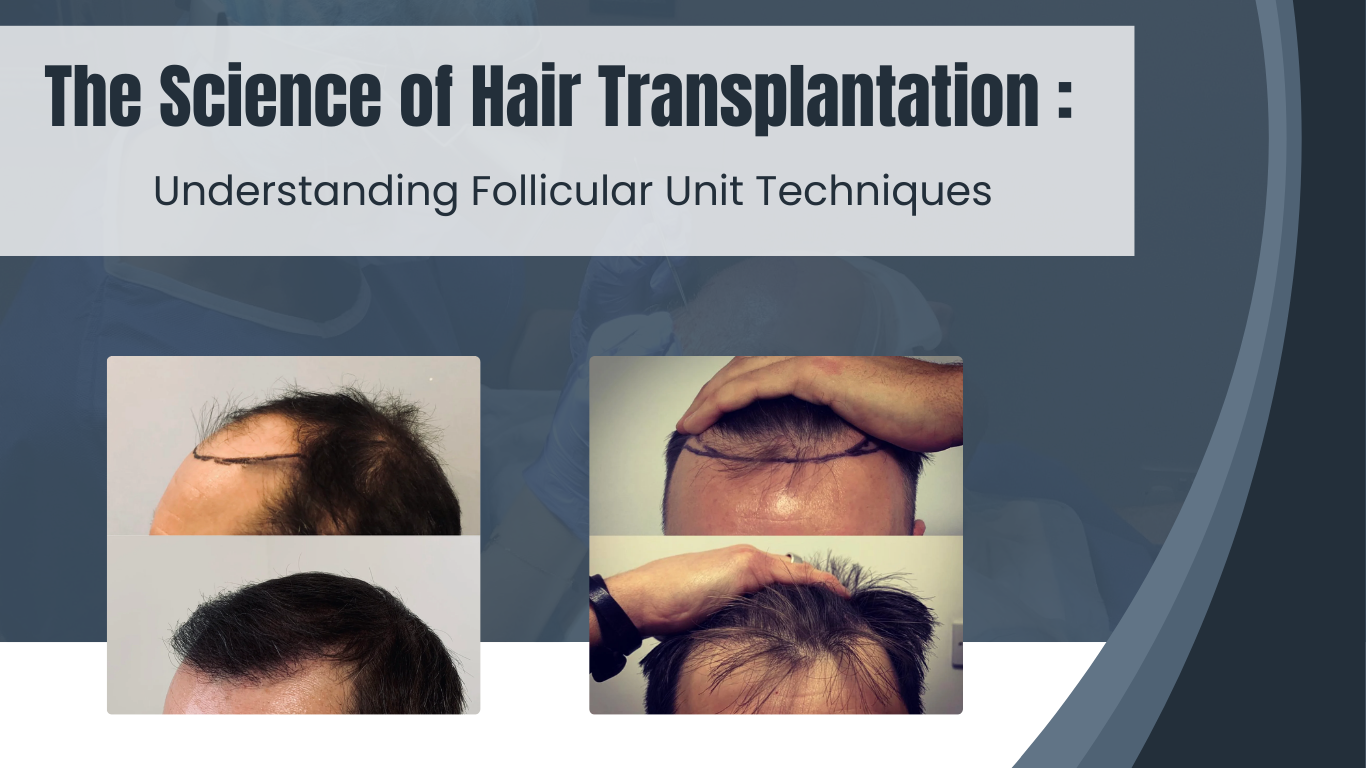
Hair loss can profoundly affect confidence and self-perception. Medical advancements have made hair transplantation a consistently effective solution with natural-looking outcomes. Central to these advances are follicular unit techniques, which ensure hair is transplanted in its natural groupings to achieve the most authentic results.
This article explores how follicular unit hair transplantation works, why it remains the preferred method among professionals, and what candidates can expect from the procedure.
Hair transplantation is a surgical procedure that relocates healthy hair follicles from donor areas, typically the back or sides of the scalp, to regions experiencing thinning or baldness.
The success of this procedure hinges on the concept of donor dominance: follicles from resistant regions retain their characteristics after transplantation, including their ability to grow hair unaffected by the processes causing hair loss.
Two primary techniques are employed:
• Follicular Unit Transplantation (FUT): A strip of scalp is surgically removed and meticulously dissected into individual follicular units under magnification.
• Follicular Unit Extraction (FUE): This method involves harvesting individual hair follicles from the donor region with a precision punch tool, leaving only tiny, scattered marks.
Both methods transplant hair in naturally occurring clusters of one to four hairs, ensuring a seamless and realistic appearance.
Understanding these techniques is essential for anyone considering hair restoration, as they offer distinct advantages:
• Natural results: By using your own hair, the transplanted follicles blend perfectly with existing hair.
• Durable outcome: Donor follicles come from areas genetically resistant to the hormonal influences that cause hair thinning, promoting longevity.
• Minimal scarring: Particularly with FUE, scarring is virtually undetectable.
• Precision and safety: The methods require surgical expertise, which optimises results and minimises complications.
These approaches are suitable for various causes of hair loss, including hereditary pattern baldness, trauma, or scarring.
Donor Area Selection and Extraction
A surgeon identifies the donor region, usually at the rear or sides of the scalp, where follicles are least sensitive to hair thinning factors.
• In FUT, a narrow strip of scalp is surgically removed and then carefully dissected into individual follicular units under magnification.
• In FUE, individual follicular units are extracted directly.
Preparation of the Recipient Area
Tiny incisions are made in the balding or thinning region, carefully aligned to your natural hair’s direction and density.
Implantation of Follicular Units
Each follicular unit is delicately implanted into the recipient sites. The surgeon’s skill here is crucial to ensure natural growth patterns and appearance.
Recovery and Aftercare
Patients receive detailed post-operative care instructions. Initial swelling or redness is common, and temporary shedding of transplanted hair may occur before new growth begins around three to four months post-procedure.
Hair thinning is often linked to sensitivity to naturally occurring hormones present in both men and women. These hormones can gradually cause susceptible hair follicles to shrink, resulting in thinner or absent hair.
Hair follicles in the donor areas are typically resistant to this hormonal influence, which explains why they remain viable and continue to grow when transplanted.
Recognising this biological foundation is vital to appreciating the long-term success of hair transplantation.
• Selecting a clinic solely on cost: Low prices may compromise safety, quality, or aftercare.
• Neglecting surgeon credentials: Always confirm qualifications and memberships with recognised bodies such as ISHRS and BAHRS.
• Skipping personalised consultation: Each patient’s hair loss pattern and goals differ, necessitating individual assessment.
• Expecting immediate outcomes: Hair growth is gradual; patience is essential for satisfactory results.
At Haris Hair Transplant, every procedure is conducted by an NHS-trained Plastic Surgeon, ensuring the highest standards of medical care and ethical practice. With over 5,000 successful surgeries and full membership of ISHRS, BAHRS, and ABHRS, the clinic delivers precise, patient-centred hair restoration.
Benefits of choosing Haris Hair Transplant include:
• Direct consultation with the surgeon, not an intermediary
• Transparent, competitive pricing with no hidden fees
• Treatment in a CQC-registered facility equipped with the latest technology
• Honest, tailored advice focused on your unique hair restoration goals
• Consistently excellent patient feedback and verified 5-star reviews
Yes. Because follicles are taken from hormone-resistant areas, the transplanted hair generally continues to grow for life.
Local anaesthesia ensures the procedure is comfortable. Some mild discomfort or soreness may be experienced during recovery but is typically manageable with over-the-counter pain relief.
Initial growth usually begins between three and four months, with full results visible by nine to twelve months post-surgery.
Certainly. Women experiencing hereditary hair thinning, traction alopecia, or hair loss due to scarring can often benefit from these procedures.
When performed by an experienced surgeon, the results blend seamlessly with existing hair, creating a natural hairline and density.
Most individuals with a stable donor area and realistic expectations qualify. A professional consultation will provide confirmation.
In certain cases, beard or chest hair can supplement scalp hair when donor supply is limited.
The duration depends on the number of grafts required but typically is completed in a single day.
After full recovery, results are usually indistinguishable and natural-looking.